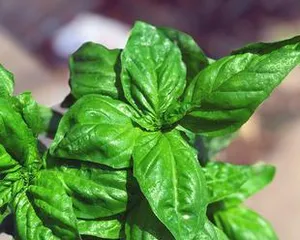Basil is a culinary herb plant often used in cooking, whose aromatic flavor can enhance the taste of food. However, to make basil grow lush and healthy, some special care is needed. This article will detail how to care for basil for lush growth, allowing them to grow healthily in your home and bring a fresh fragrance.

I. Choose the Right Basil Variety
If you plan to grow basil, first learn which varieties are suitable for indoor cultivation. You can choose more cold-tolerant varieties, such as "Golden" and "Italian Large Leaf," which are more suitable for indoor planting.
II. Choose the Right Pot and Soil
Basil needs a large container to ensure its growth and development. Generally, a container with a diameter of about 30 cm is sufficient. Choose a pot with drainage holes to allow excess water to drain quickly. The soil should be a soft, organic-rich mixture, which can be made by mixing composted manure, perlite, and peat.

III. Provide Ample Sunlight
Basil needs plenty of sunlight to grow healthily. They require at least 6 hours of sunlight, so placing the container near a window on a balcony or outdoors can allow the basil to receive enough sunlight.
IV. Maintain Suitable Temperature
Basil growth requires a suitable temperature; do not expose it to extreme cold or extreme heat. The most suitable temperature is around 20°C, which is a comfortable room temperature for humans, allowing basil to thrive.
V. Maintain Suitable Humidity
Basil needs a certain amount of humidity, but not too much. In dry seasons, you can spray some water around the basil to increase the surrounding humidity. However, do not let water droplets get on the basil, as this can cause diseases.

VI. Water Moderately
Basil needs a moderate amount of water, but not too much. Generally, you should water when the soil surface appears slightly dry. Overwatering can lead to root rot.
VII. Fertilize
During the basil's growth period, it needs to be fertilized moderately. You can choose organic fertilizer and apply it once a month. Do not apply excessive fertilizer, as it will burn the roots of the basil.
VIII. Prune Basil
Basil needs proper pruning to maintain its shape and health. When the basil grows to a height of 10-15 cm, you can pinch off some of the top leaves to promote the growth of side branches. Do not cut off too much at once, as it will affect the growth of the basil.
IX. Keep Basil Clean
During the growth period, it is necessary to regularly clean the leaf surface and the surrounding environment. You can wipe the leaves and the surface of the pot with a damp cloth to remove dust and dirt. This can increase light reflection and promote basil growth.
X. Prevent Pests and Diseases
Basil is susceptible to some common pests and diseases, such as whiteflies, spider mites, and aphids. Methods to prevent these include keeping the indoor environment dry and using natural pesticides.
XI. Don't Over-harvest Leaves
Although harvesting leaves helps basil grow healthily, over-harvesting can affect its normal growth. When harvesting leaves, you need to master the degree and not pick too many to avoid affecting the health of the basil.
XII. Handling Basil Flowers
If basil flowers, it needs to be dealt with promptly. Because flowering consumes the plant's nutrients, affecting its growth and flavor. You can cut off the flowering parts to maintain the plant's growth and quality.
XIII. Companion Planting
If you want your basil to thrive, consider planting it with other plants. For example: roses, tomatoes, and herbs, as these plants can mutually promote each other's growth.
XIV. Irrigation Method
When watering, you can consider pouring water from the bottom of the container. This can avoid water shrinkage and effectively prevent seepage loss.
XV.
Basil is a healthy and delicious culinary herb plant. Proper care methods can make them grow healthily. This article has covered various aspects of basil care, and I hope it is helpful to you.